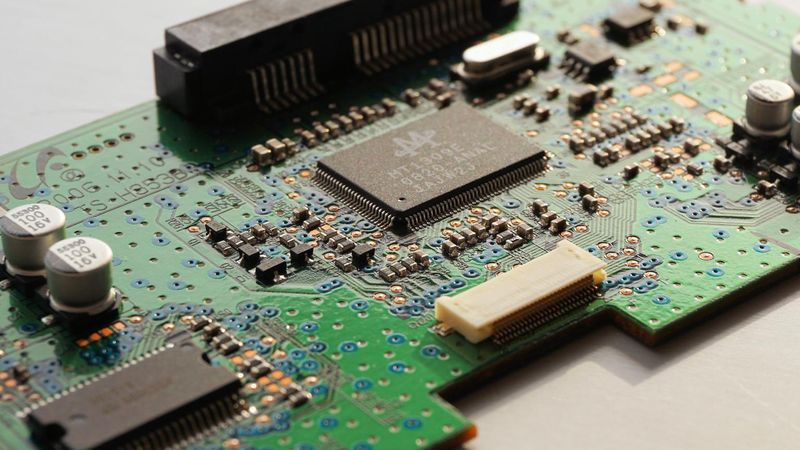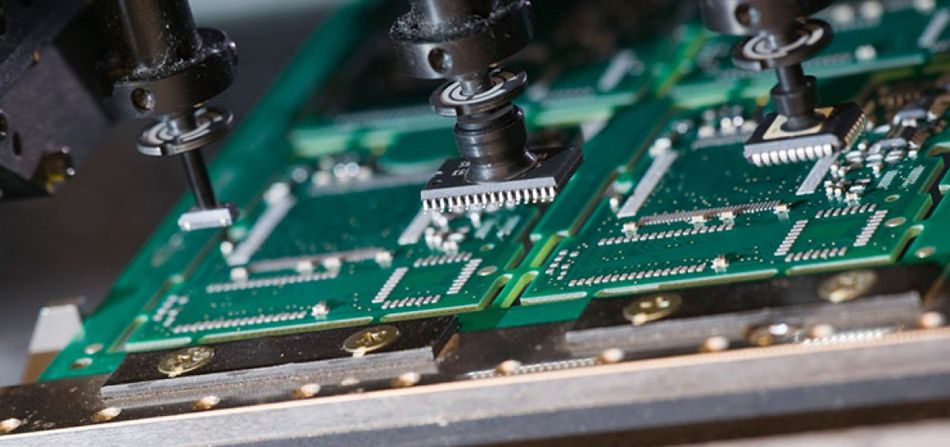SamacSys Power User Case Study: Icarus-Design
Article 1 in our PCB series: Incorporating CAD library design tools radically improve efficiency and design accuracy in the PCB design process.

This is our second article of three exploring the printed circuit board (PCB) design process. It aims to reveal the changes in the industry that have led to increased efficiency in the PCB design process and discuss how these changes influence the relationship between designer and component manufacturer. In this article, we talk with Johnnie Howman, Managing Director of the PCB design bureau, Icarus Design, about the changes in the industry over the last four decades and the role of CAD component library services in his design process.
This series is sponsored by Supplyframe, a company connecting engineers and designers with vertical search engines, and online communities. SamacSys is a Supplyframe Company. Through their sponsorship, Supplyframe is dedicated to broadening education about electrical engineering and the PCB design process.
Introduction
Every modern piece of technology contains a printed circuit board or PCB loaded with electronic components. The board and its components provide a way to integrate the electronics for a device in a compact space. Each PCB is designed for a specific task or tasks such as computing, communications, and data transfer related to the function of the device it is enclosed in. The design of modern PCBs allows for fragile components to be correctly connected to a power source while being safely insulated.
There are many stakeholders and technologies involved in PCB production. These include the component manufacturers, the actual PCB designers, the client or designer of the final device, and the PCB manufacturer.
The PCB production process
A core step is the design of the board itself. While many devices require similar PCBs which can be bought as a standard item, new boards need to be designed all the time to meet new technological demands, improve existing designing, and create custom boards for new and one-off technologies.
Boards are designed by specialized PCB designers or electrical engineers who may work for PCB specializing design bureaus, OEMs, or ODMs.
For a board to be manufactured it first needs to be designed in software (CAD), this design contains exact models of every single component within it. These components include semiconductors, LEDs, batteries, capacitors, etc that work together to define the board’s functions and properties.
There are a huge amount of component manufacturers who each produce thousands of different types of components. Efficiently finding and modeling these components for inclusion in a design is a significant part of a PCB designer’s workload. This is not only a time-consuming task within the design project timelines, it can also divert expert resources away from other high-level tasks.
Addressing the problem
One of the major shifts of PCB design over the last decade has been the introduction of free, online, accessible CAD component libraries. Previously each designer or design bureau would attempt to maintain a CAD component library to assist them in their design process and make using the same components easier each time. However, manufacturers can produce thousands of parts per year, and maintaining a library that is accurate and completely up to date is near impossible.
SamacSys is the most used provider of CAD library services that is working to solve the CAD modeling problem that has plagued the electrical engineering and OCB design world for decades. SamacSys works by collaborating with major PCB component manufacturers who provide the models for their components. SamacSys ensures that the component models are completed correctly and can be downloaded straight into common design software without unzipping or further alterations. The SamacSys library service is free for designers who can search for the right component for their board design from a wide variety of manufacturers, providing the choice of the right component without being limited by access to a single supplier library. SamacSys aims to reduce the amount of time designers and engineers need to spend designing individual components and instead use that time for innovation.
Johnnie Howman and Icarus Design
Johnnie Howman is the Managing Director of Icarus Design a PCB design bureau based in the UK. Wevolver spoke to Johnnie about the role SamacSys has played in his PCB design process, the changes he has witnessed in the industry, and his predictions and thoughts on the future.
Johnnie has been working in the PCB world for more than four decades since starting as an intern at British Aircraft Corporation guided weapons development (later BAE Systems) in the 1970’s. This first foray into the electronics design industry put him on a learning path that he still enjoys today. After completing his internship he was offered a job at BAE, joining the company in the drawing office as a PCB Draughtsman. The timing was perfect for him to begin immediate training on the then-new and highly advanced Computervison system, laying out complex PCB’s for many military projects. Looking for new challenges Johnnie eventually left BAE and joined the design team at Rank Cintel where he worked on multichannel digital and analog video PCBs. He later worked for Orbitel Mobile communications in the early days of mobile phone development. In 1994, together with distributors of PADS software in the UK, Johnnie setup Icarus Design.
Building efficiency into the process
Johnnie has been designing PCBs every day for over forty years and he says without a doubt the single most influential change in the PCB design process has been the introduction of well-functioning online CAD libraries. “I'll probably find a good 95% of parts I want are there,” says Johnnie describing the SamacSys library. “And even if they're in a fashion that I might not quite want to present - because I might want to do something in a certain way for my customer - they've done the core of the work for me. It's become a really good resource, it's one of the most interesting things that has happened to us for a long time.”
Johnnie says he was an early advocate for these resources as he could immediately the value they would bring to his design process. Additionally, he was interested in ways of easily and intuitively browsing newly released components in a centralized location. He is now a daily user of SamacSys, adopting it into his design process soon after the service launched.

Designing with SamacSys
For Johnnie the advantage of SamacSys is two-fold. First, it streamlines his design process, saving him countless hours modeling the relevant component for each board design. In addition, it also adds a level of design security by increasing his confidence that the board design is accurate. “The library gives us another level of checking,” says Johnnie. “Because they have done their quality control. I might do another thermal check and then it gives me much more confidence in the product. If I just model the parts, no one's checked that. So using the library this way gives us two levels of checking. That works very well for us.”
In addition to individual components, Johnie says that when required he will sometimes use the schematic deck tools that can be easily and quickly rearranged to reflect the needs of his customers.
Streamlining design in a competitive space
SamacSys also plays a role in the way Johnnie plans to work with clients. Knowing that the research and selection step of a new PCB design will now take a fraction of the time it did previously allows Johnnie to both accept design jobs with shorter project timelines as well as accurately cost the hours for new board designs. Additionally, it means his team can simply do more boards per year as they are able to design more efficiently.
“It’s sped up my design process, so instead of now having to spend a day, or more than a day making library parts just to start the job, I can now get started within an hour, because all the hard work is done for me. I don’t need to say to my customer, ‘Sorry I need to make my library parts, I need two days, I'll call you back Friday then we'll start the job.’ Now I know, within an hour, I can be up and running,” Johnnie says.
Johnnie observes that while SamacSys has already assisted in streamlining his company’s PCB design process he believes there are still improvements to be made in the online CAD library area. He is looking forward to even larger selections of available components being available, as well as innovative methods to stay informed of component changes and advances.
Looking forward at PCB design
As the PCB design world gets increasingly competitive and more design work is done in China and other southeast Asian locations Johnnie predicts that bureaus will need to use a combination of experience and design efficient tools to remain competitive. Online libraries will play a role in informing designers about what is new and in demand by other designers. Johnnie expresses some concern for the industry, speculating about the lack of training opportunities for new PCB designers. “There is going to be a real lack of PCB designers coming through and there will be a real skill-shortage of young trained people,” say Johnnie. “I think that's going to be a big thing for the industry. I don't see PCB design in a university course and big companies like British Aircraft Corporation don’t offer internships like they used to. The PCB designer’s job is going to sort of wither away a bit. It might have an impact on manufacturing. If you're using poor techniques, then that may result in a board that is difficult to manufacture, which can impact on innovation,” Johnnie muses.
Conclusion
While there have been huge technological advancements within PCBs themselves, the process of designing boards has experienced very few changes since the introduction of CAD. However, CAD library services like SamacSys are now changing the way designers work, improving their efficiency, and freeing up their time for more innovation.
This is the first article in a series about PCB design. The second article examines the role of collaboration between suppliers and designers. The final article looks at the case study of NASA designing a new ventilator in just 37 days.
About the Sponsor: Supplyframe
This article is sponsored by Supplyframe. Supplyframe aligns electronics demand with supply and brings new levels of resiliency to the global electronics value chain, with transformative, intelligence-based solutions to deliver insights at key decision points throughout the entire design-to-source product lifecycle. Leveraging billions of continuous signals of design intent, demand, supply, and risk factors, Supplyframe’s Design-to-Source Intelligence (DSI) Platform is the world’s richest intelligence resource for the electronics industry. Over 10 million engineering and supply chain professionals worldwide engage with our SaaS solutions, search engines, and media properties to power rapid innovation and optimize in excess of $120 billion in annual direct materials spend. Supplyframe is headquartered in Pasadena, Calif., with offices in Austin, Belgrade, Grenoble, Oxford, San Francisco, Shanghai, and Shenzhen.


